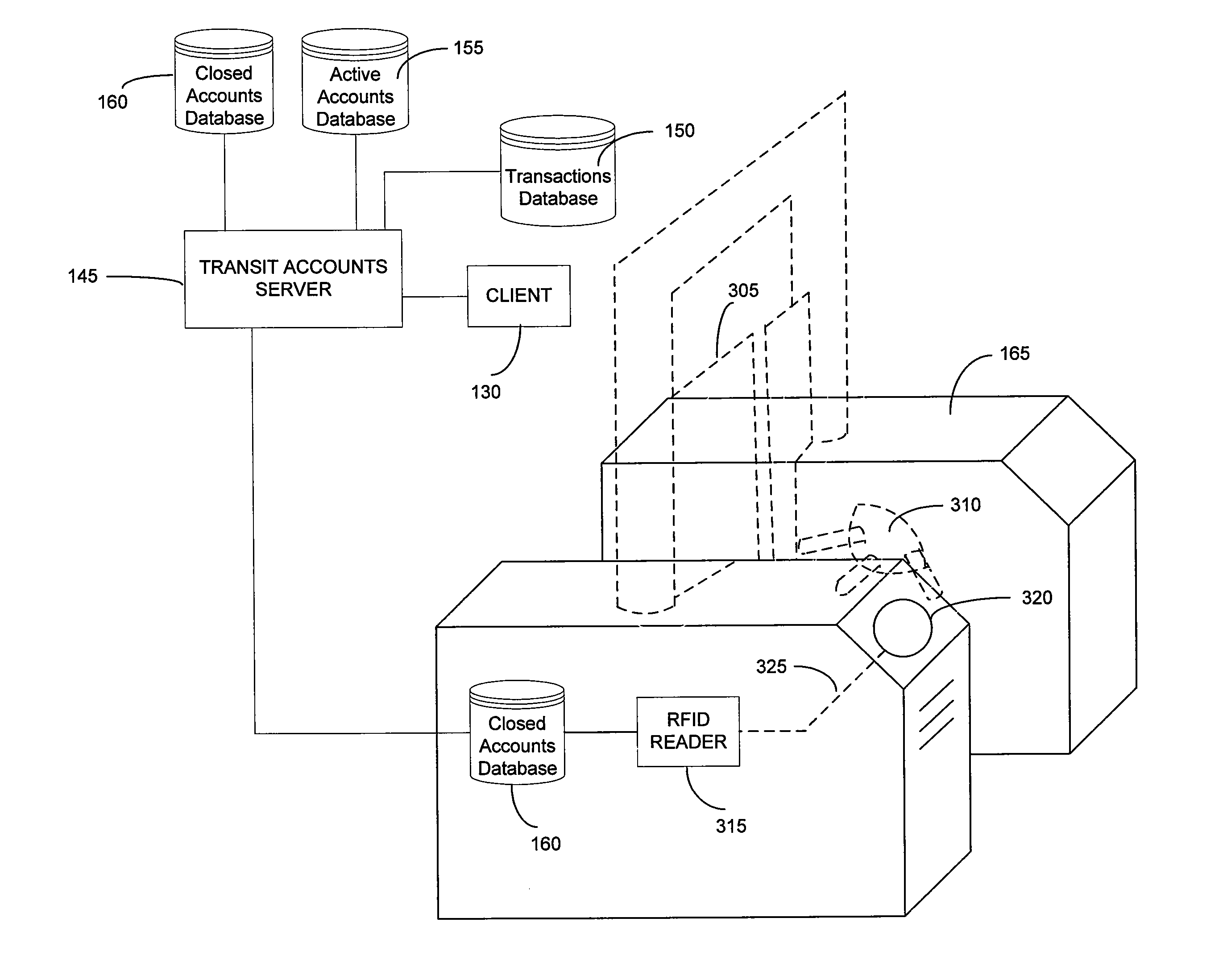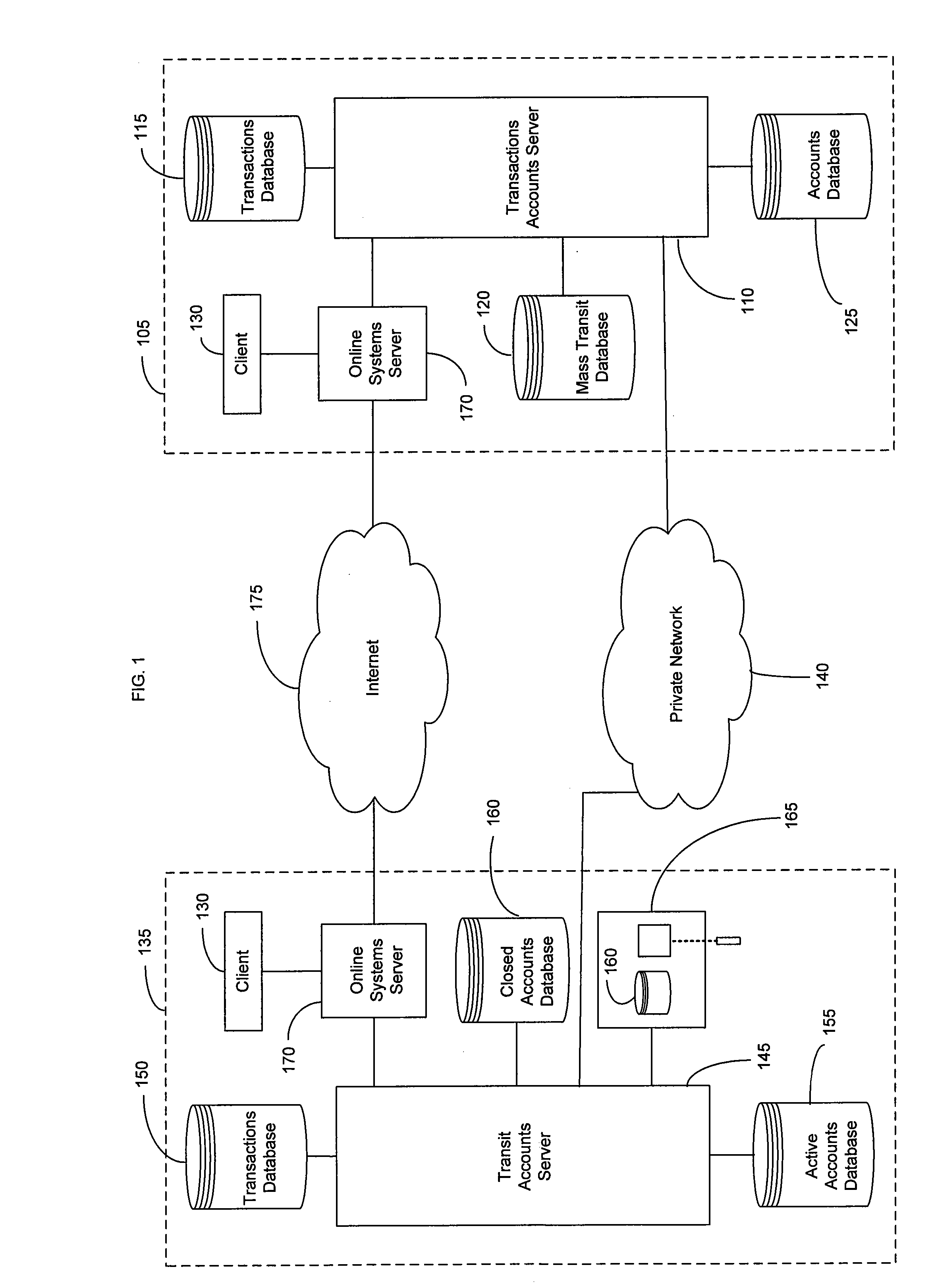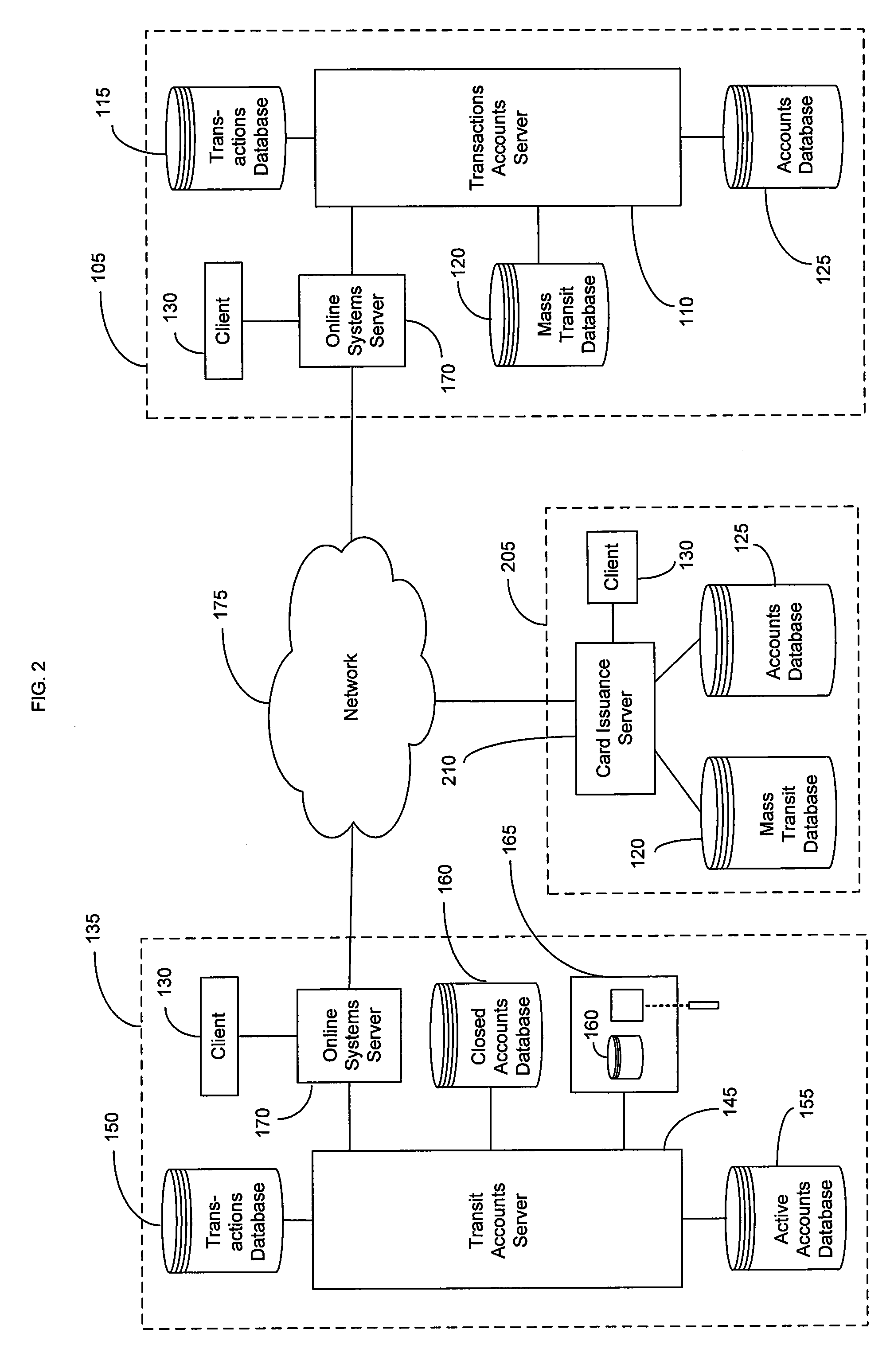System and method for mass transit merchant payment
a mass transit merchant and payment system technology, applied in the field of mass transit merchant payment system and method, can solve the problems of inability to authorize single ride transit fare payments individually by a credit card issuer in a mass transit environment, inability to complete traditional transaction instrument payments, and inability to use credit cards for payment of one-time, sporadic, or regular mass transit fares. to achieve the effect of reducing the need, and reducing the number of transactions
- Summary
- Abstract
- Description
- Claims
- Application Information
AI Technical Summary
Benefits of technology
Problems solved by technology
Method used
Image
Examples
first embodiment
[0129] More precisely, in a first embodiment, the mass transit operator may record each entry and exit of a user with an MT number while also calculating the fare amount due for each use of the mass transit system as it occurs. In this embodiment, the number of entries and exits is recorded contemporaneously with the fare calculation for each use.
[0130] Alternatively, the mass transit operator may record each entry and exit for a particular MT number over a set period of time, thereby maintaining a running tally of use on its system. At the end of the time period, the mass transit operator then calculates the total amount due at its facility. This deferred calculation of the total fares due is most routinely used under the present invention.
[0131] Further still, the mass transit operator may record a particular user's number of entries and exits over a period of time, and subsequently forward this total, along with its standard payment schedule, to the financial instrument issuer f...
third embodiment
[0149] In this third embodiment, the mass transit operator again does not store any transaction account numbers that are linked with its MT numbers. Instead, all information pertaining to the transaction account remains with the transaction instrument issuer, less accessible to potential theft. Therefore, settlement of the transaction in the present invention does not involve use of a customer's sensitive financial data by the mass transit operator.
[0150] The foregoing methods for payment settlement under the present invention are merely illustrative of preferred processes for settlement of the transaction price between the mass transit operator and instrument issuer and, hence, do not limit the invention to only these methods for processing payment. Indeed, numerous methods for settlement of the transaction may be available for use with the present invention.
[0151]FIG. 11 shows an example of how a user conducts a transaction using the transaction instrument to pay for mass transit...
PUM
 Login to View More
Login to View More Abstract
Description
Claims
Application Information
 Login to View More
Login to View More - R&D
- Intellectual Property
- Life Sciences
- Materials
- Tech Scout
- Unparalleled Data Quality
- Higher Quality Content
- 60% Fewer Hallucinations
Browse by: Latest US Patents, China's latest patents, Technical Efficacy Thesaurus, Application Domain, Technology Topic, Popular Technical Reports.
© 2025 PatSnap. All rights reserved.Legal|Privacy policy|Modern Slavery Act Transparency Statement|Sitemap|About US| Contact US: help@patsnap.com



